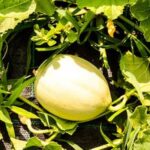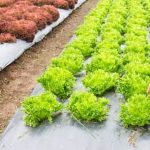Introduction
Having a vegetable garden in your small backyard can be incredibly rewarding. Not only do vegetable gardens provide healthy and natural fruits and vegetables that are lower in cost than store bought produce, but they also offer several environmental and community benefits. By choosing to grow your own food, you reduce the emissions of shipping them from large industrial farms to your local supermarket, as well as helping to create green spaces for local wildlife. Additionally, a vibrant community vegetable garden provides a great opportunity for families to come together and work collaboratively.
Furthermore, studies have shown that those who maintain garden plots often report improved mental wellbeing due to the stress-reducing effects of interacting with nature. The physical labor of gardening also provides many therapeutic health benefits such as increased muscle strength and improved flexibility. Gardening has even been found to lead to social inclusion and community cohesion by providing an opportunity for people of different ages and backgrounds to connect with one another while sharing common interests. In these ways, having a vegetable garden in your small backyard can be beneficial not just to yourself but also the environment around you.
Preparing the Space
One of the best ways of growing a healthy and productive vegetable garden in a small backyard is to employ raised bed gardens and container gardens. With raised beds, you can create large areas to work with without having to till or dig into the native soil. By using wood sides or other framed materials, you can section off an area as big or small as needed, ensuring that only the soil in that area is being worked with. You also don’t have to worry about weeds and grass being able to compete with your vegetables for light and nutrients.
When using containers for your vegetable garden, you can take advantage of limited space on a balcony, porch, or patio. To plant vegetables in them effectively, containers should typically be at least 10-12 inches deep and 12-18 inches wide. While bigger containers may provide more room for vegetables to grow larger roots and more fruits/vegetables, this may not always be possible due to space constraints. Additionally, when you choose your container material make sure it won’t leak chemicals into the soil and will allow drainage so that excess water does not damage the root system. For example, some polyethylene bins labeled safe for food production do great at holding soil without sacrificing quality; however ceramic pots can be liable to freezing temperatures in winter months if left outside. Furthermore light weight plastic pots are easily transportable but they require periodic watering which can be a challenge given their shallow depth.
So no matter what type of space you have available: whether a backyard full of potential or just a few feet on a balcony or patio – consider using either raised bed gardening or container gardening solutions to get your own healthy veggie garden up and running!
Plant Selection
When it comes to selecting vegetables, herbs and flowers for your small backyard garden, there are plenty of options. Creating a diversified garden that takes advantage of the size of your space is key. Consider planting greens like kale or spinach in raised beds. These crops take up little space but yield high production potentials. Alternatively, you can choose to plant bush varieties such as tomatoes and cucumbers, which don’t necessarily require a lot of room and provide the same amount of harvests as traditional garden potatoes and carrots. Herbs also work well in small spaces, as they are bushy and generally contained within their own containers or pots.
A vegetable garden in a small backyard can be an inviting place full of color, texture and scent – not just green and brown! In addition to standard vegetables crops like lettuce, consider various ornamental edibles like Swiss chard or related crinkled leaf lettuces whose colors highlight any landscape design. Flowers such as marigolds or nasturtiums have been long used in gardens to attract pollinators while providing pest-repellent qualities to nearby plants; they look great when tucked between foliage providing that extra pop of interest in your veggie plot!
Plant Care
Choosing the right type of soil for a vegetable garden is important. You want to find soil that is loose and airy so it will not hinder plant roots from growing. Make sure that your soil is nutrient rich, has enough water retention, and drains well. Fertilizing is important as it provides essential nutrients to your plants. Choose a fertilizer that contains complete elements in the right proportions for your specific vegetable plants. When you fertilize depends on which vegetables you are planting. Typically, watering should take place every two-three days, but this may vary depending on the type of plants and weather conditions. Try to avoid early morning or late evening watering to reduce disease risks. Utilize drip irrigation or soaker hoses around plant roots instead of using sprinklers to ensure the water gets down deep into the soil where the roots can absorb it easier and faster.
Managing Pests and Diseases
One of the main challenges for growing a vegetable garden in small backyard is managing pests and diseases. It is important to prevent as many pest and disease problems from arising as possible, so that your vegetables can remain healthy and productive.
One natural way to do this is to create a habitat for beneficial insects like lacewings and ladybugs that feed on the pests that attack your vegetable crops. This means planting flowers alongside or between rows of vegetables, such as nasturtiums, dill, cilantro, fennel, and other flowering herbs. You can also buy beneficial insects from gardening centers and have them released directly into the garden area.
Another chemical-free method for combating pests and diseases is crop rotation. This involves planting different types of vegetables in different locations each year, making it harder for pests to find them. It also helps reduce nutrient depletion in soil since each type of vegetable requires different nutrients from the soil. Additionally, you can use compost tea or nettle extract as a natural pesticide spray against some common insect pests such as aphids or cabbage loopers. For fungal problems like mildew or blight, an effective solution is spraying the plants with milk in water solution (1 part milk to 10 parts water). This acts as a preventative measure by providing much-needed calcium on the leaves of plants which prevents infection from fungi before they take hold of your crops’ health.
Harvesting and Storing Produce
Harvesting Produce: The best harvesting techniques depend on the type of vegetable you are growing. A general rule is that vegetables should be harvested when they are ripe and at their peak of flavor. If you leave them on the plant for too long, the quality can degrade. For hard-shelled vegetables such as squash and pumpkins, use a knife to cut them off the vine. For soft-fleshed vegetables like tomatoes, cucumbers, beans, and peas, it is best to gently pull them off by hand.
Storing Produce:Canning is one method of storing produce from your vegetable garden in a small backyard. Canning involves placing prepared foods in airtight jars, vacuum sealing them and boiling them until they are sterilized. This will preserve produce longer than other methods and makes it easier to store in your pantry or basement for later use. The downside to canning is that it requires special equipment and a fair amount of time and effort to complete the process correctly. Another way to store produce is freezing which preserves taste, texture and nutrients almost as well as canning but has significantly less preparation time involved compared to canning
Conclusion
Creating and maintaining a vegetable garden in a small backyard can be an incredibly rewarding experience. Not only does it provide the opportunity to grow fresh, nutritious vegetables in the comfort of your own space, but it also helps to create a sustainable and eco-friendly environment. Additionally, having a vegetable garden helps to improve air quality, reduce water usage, conserve resources and promote healthy eating habits. Taking these points into consideration, it is clear that investing time and effort into maintaining a vegetable garden in your backyard will be beneficial for you, your community and the environment as whole.

If you’re looking to get into vegetable gardening, or are just looking for some tips on how to make your current garden better, then you’ve come to the right place! My name is Ethel and I have been gardening for years. In this blog, I’m going to share with you some of my best tips on how to create a successful vegetable garden.





